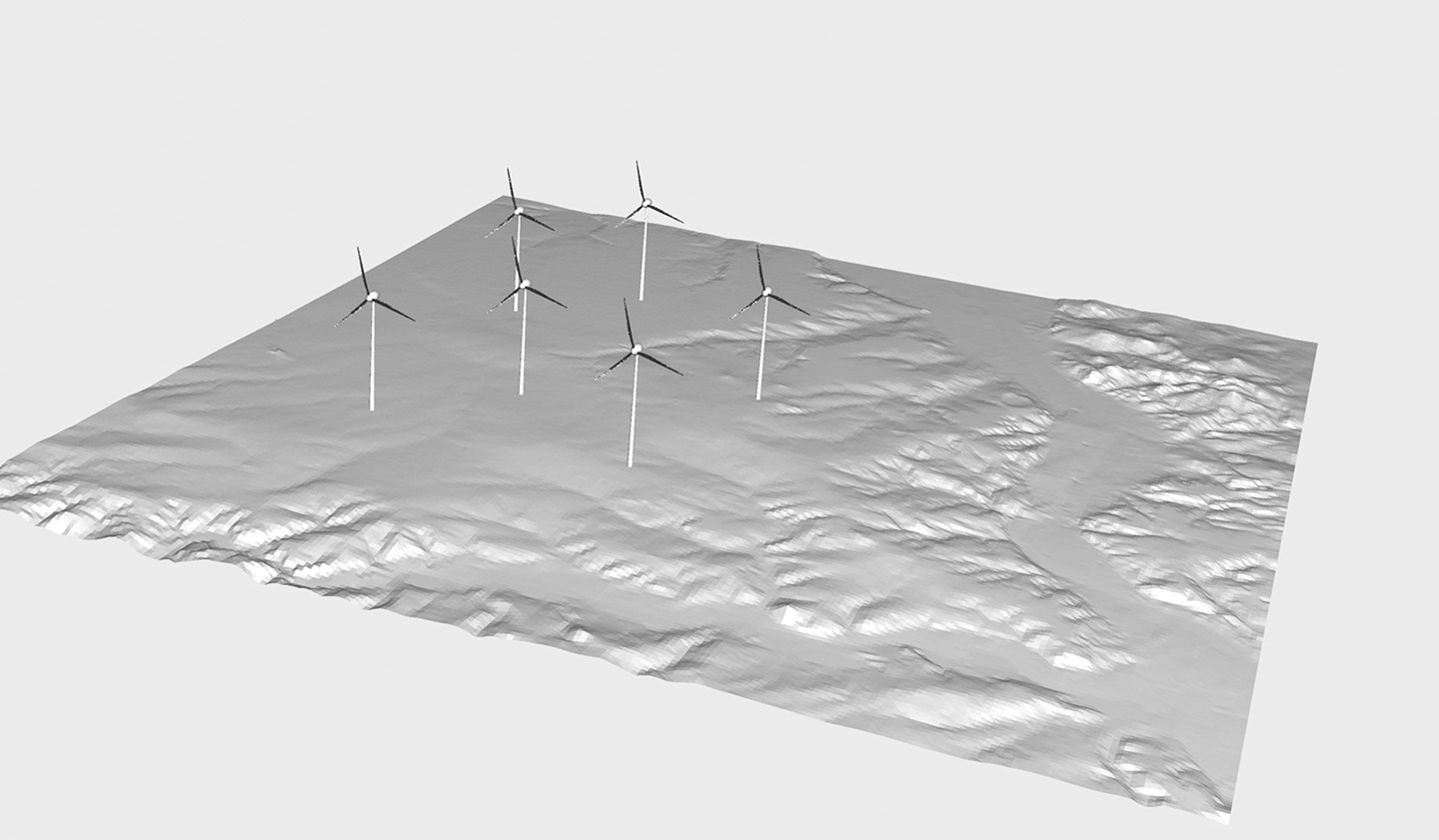Modeling of complex electromagnetic scenarios
From miniaturized antennas to large wind farms – with its simulation methods Fraunhofer FHR can forecast the propagation of electromagnetic waves in almost any scenario. As such, computer-assisted simulations play a decisive role in the development of antennas and radar systems.
The software requirements for electromagnetic modeling (EM) are increasing continuously due to the trend towards higher frequencies with smaller wavelengths in a large number of applications, e.g. radar and communication. Whereas it was only possible to investigate very simplified and spatially restricted problems in the past, the techniques that are currently being used are capable of modeling complex and nearly realistic scenarios. »Complex« in this context, refers to the geometry, the degree of detail, the size of the model or the scope of the simulations that are to be carried out.
The techniques developed at Fraunhofer FHR for the modeling of scattered electromagnetic fields also allow the efficient and precise calculation of the characteristics of larger and more complex radar targets. Depending on the task at hand, numerically exact and asymptotic techniques are used. The efficiency of these techniques orientates on the current state of science with the result that capabilities not yet implemented in commercial EM software are sometimes available. These simulation software capabilities are, in turn, a prerequisite for the modeling of the scenarios that are the subject of investigation.
Efficient beam search and optimization algorithms from computer graphics have, for example, been implemented in the area of EM modeling which, in turn, can be combined with methods for the calculation of electromagnetic fields, e.g. the Physical Optics (PO) method. The numerically exact methods use algorithms for the optimized modeling of dielectric materials thus paving the way for the precise modeling of objects irrespective of their individual material combinations.
The simulation tools have been validated with numerous test calculations and are internationally accepted. Since 2006, the institute has, for example, participated in the workshop »Radar signatures« which takes place every two years in Toulouse. In the course of this workshop, the efficiency and precision of simulation tools from different countries are compared in a series of benchmark simulations. Fraunhofer FHR also makes important contributions to the NATO working group SET-200 »Electromagnetic scattering prediction of small complex aerial platforms for NCTI purposes« ( 2013-2016).
Due to their special characteristics, the simulation programs from Fraunhofer FHR are often operated at the limits of technical feasibility. The modeling of dynamic components (e.g. engine components) and the resulting effects or the modeling of extremely large scenarios (e.g. terrain models with several thousand wavelengths) requires, for example, an enormous computational effort which can only be realized with special optimization techniques, e.g. parallelization or the utilization of graphic processors (GPU).
One very recent example is the modeling of the effects wind turbines have on radar systems, an area in which Fraunhofer FHR has been active for a number of years with simulations and metrological analysis. Here, the electromagnetic simulation must take account of a terrain model as well as the rotation of the rotor blades (Image 1). The global interest in this approach is clearly underlined by the growing number of publications in this area over the last years. Moreover, a session on the theme »Electromagnetic Scattering of Wind Turbines and Effects on Radar Systems«, which is co-organized by the institute, will be offered for the first time at European Conference on Antennas and Propagation (EuCAP) in 2016.
Image 2 shows an example of a further complex simulation scenario calculated with a full wave simulation: one millimeter wave sensor developed by Fraunhofer FHR requires a special plastic lens which is capable of focusing the field that is radiated by a horn antenna on one point in the form of a Gaussian beam. The figure shows a cross-section through the electrical near field, with the wave field transmitted by the antenna on the left and the focused wave field in the right with the so-called »waist«. The passage of the wave through the lens (in the form of a biconvex hyperboloid of revolution), where the wave length is much smaller due to the dielectric permittivity of the material, can also be seen. The size of the lens with a diameter of approx. 20 cm and an operating frequency of over 80 GHz poses a great challenge for electromagnetic solution methods.

